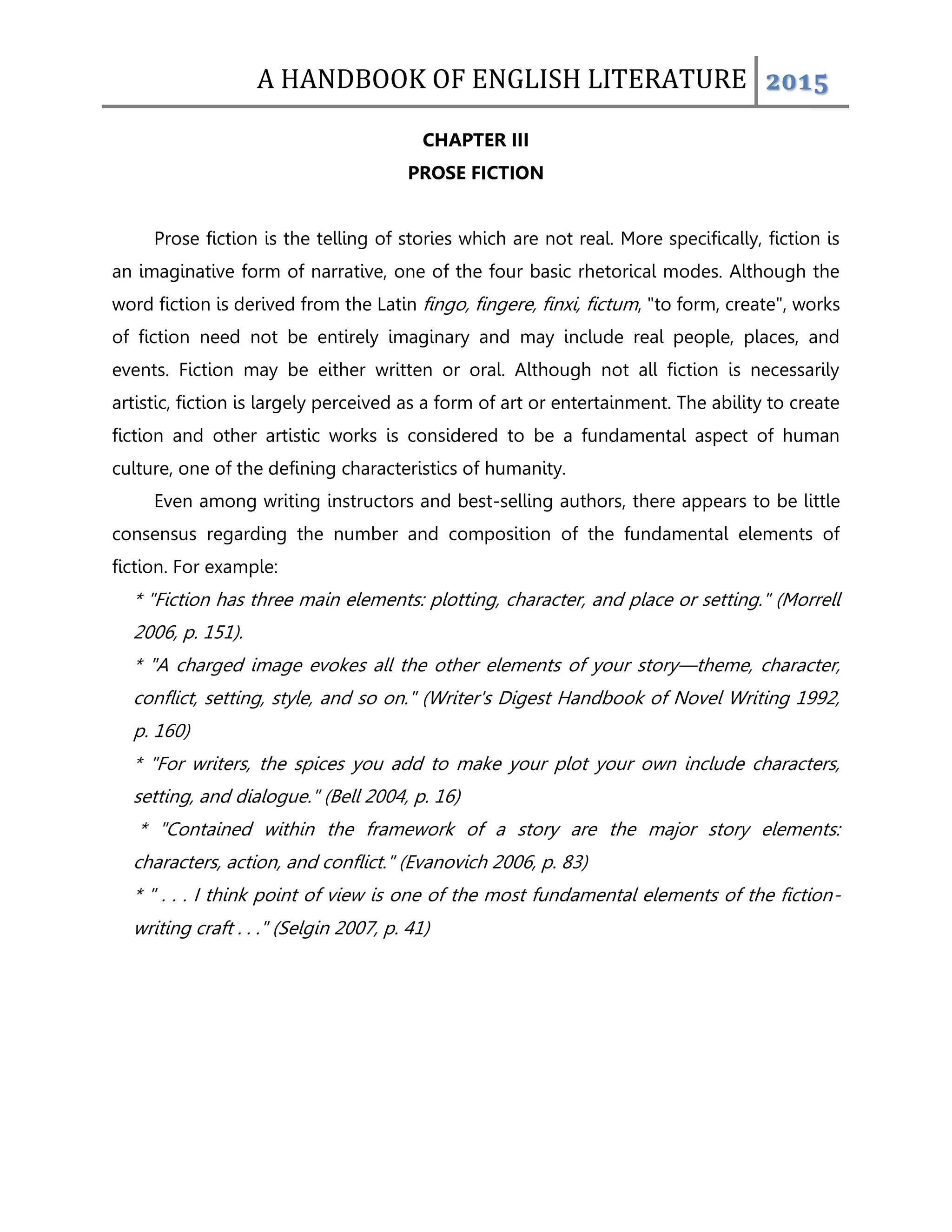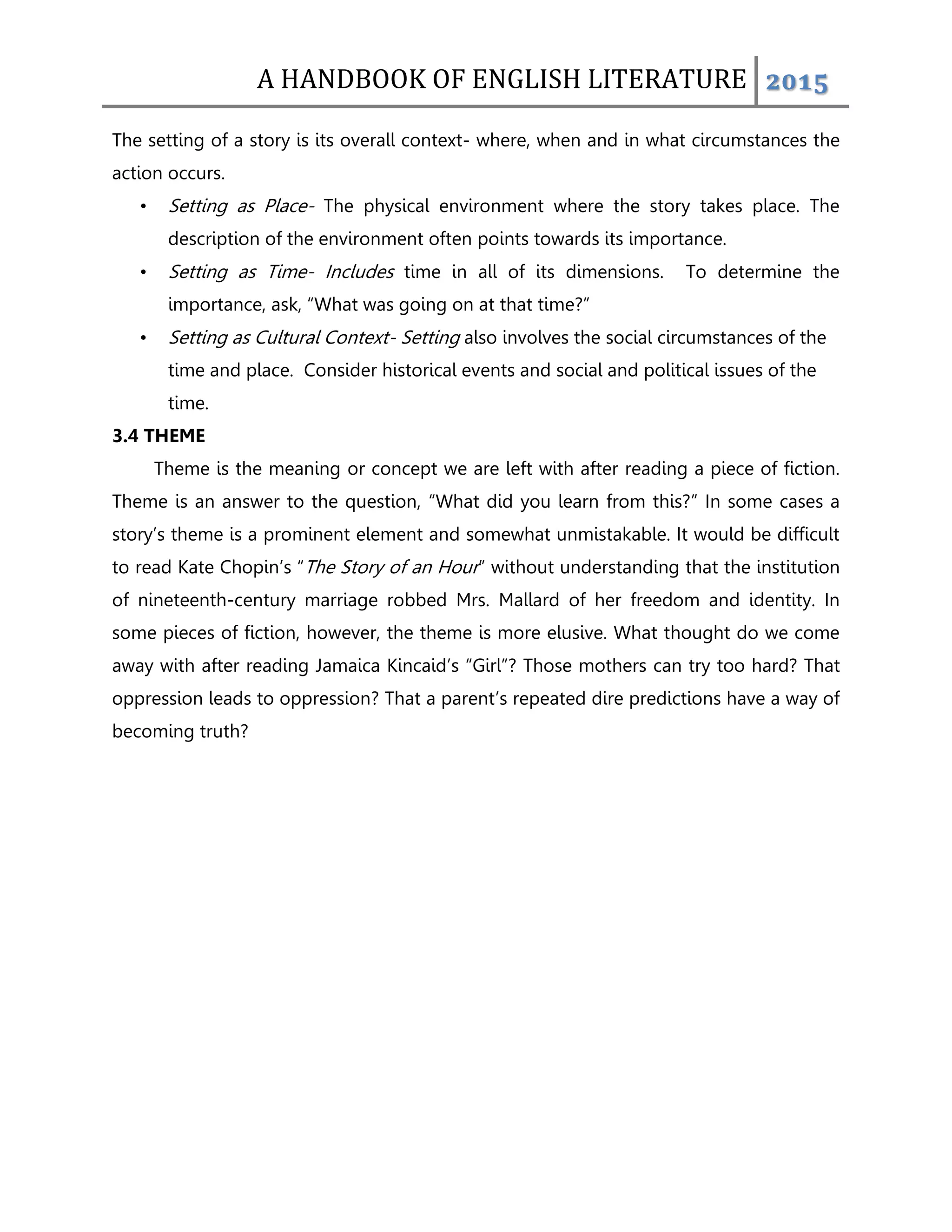The document summarizes some of the key elements of fiction including character, plot, setting, and theme. It discusses characterization and different types of characters like protagonists and antagonists. For plot, it describes the typical three-act structure of introduction, rising action and conflict, climax, and resolution. Setting is defined as the time and place where the story occurs, and can help establish mood. Theme is the overall meaning or lesson that remains after reading the story. The document provides an overview of these fundamental elements of fiction to help readers analyze and understand literary works.








